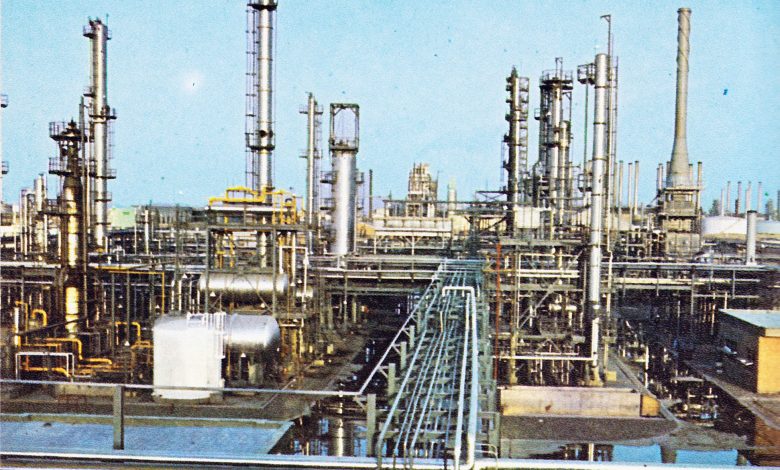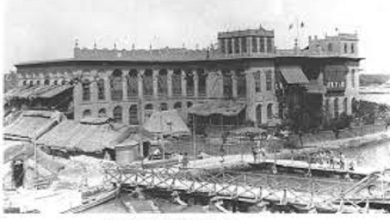
Ahwaz cities.. Abadan is an Arab city that does not know winter and the center of oil makers
Within the series of Al-Ahwaz cities, today we know Abadan, or Abadan, which is the Arabic name for this city, while it has been distorted in Persian to Abadan, which is the second largest Arab city in Iran after the capital city of Ahwaz.
The city of Abadan is located on the island of Khader on the banks of the Shatt al-Arab River, and its population is about 300,000.
The city of Abadan is surrounded by rivers, with the Karun and Tigris rivers (which are connected with each other), and the other part of a river, which flows out of this island and is less important, is called Bahmanshir. The Bahmanshir River is also called Karun in parts of its gorge.
The Arwand River passes through it, and a climate known for its hot weather since ancient times, and Abadan enjoys a tropical climate to the extent that it is mentioned in some books as a city that has no winter, and some sources even consider that Abadan has only two seasons, summer and autumn.Due to its proximity to large and scorching deserts such as the Great Desert of Arabia and Iraq, it has a hot desert climate.
Its temperature rises to 58 degrees Celsius in July and August and drops to zero degrees Celsius in February. The lowest temperature in the year is 17.7 degrees Celsius and the maximum temperature is 32.6 degrees Celsius. Freezing days are a maximum of nine days during the year.
Ahmed Magdysi called it the “tropical climate” in “The Best Division.” It has very hot summers and mild and pleasant winters, so that the air attracts winter tourists.
Al-Maqdisi mentions Abadan as “a city on an island, beyond which there is no country or village.” In the same context, one of the Arabic examples says: “There is no village beyond Abadan,” to express the end of the day.
In the Abbasid era, this city was a major port. Scholars such as Ahmed Al-Abadani (born in 248 AH), Judge Ahmed Al-Shafi’i Al-Abadani (born in 434 AH) and the traveler Hassan Al-Abadani Al-Maqri stood out.
Abadan and the surrounding lands are the home of the Arab tribe of Banu Ka’b. Most of its lands belonged to Prince Khazal al-Kaabi, the last prince of Arabistan, who ruled from 1897 to 1925.
This city flourished at the beginning of the last century, after the year 1909, and after a decade it became one of the most important cities on the Arabian Gulf. And built facilities and innovations and homes in the style of British architecture.
At the end of the reign of Prince Khazal, 80 shops were built in it, and it was connected to a modern road in Ahvas, the capital, 120 km away, with a wired network.
In 1912, the British established in Abadan the first oil refinery in the Middle East.
Oil arrives from most of the state of Ahwaz to this city through pipelines, and after refining, it is exported to the whole world.
In Abadan, it has one of the largest refineries in the world. In addition to the oil and gas industry, which is the most important source of income for the country.
The export of products such as dates and fisheries to neighboring cities had a great impact on increasing people’s income.
The nearest city to Abadan is the city of Muhammarah, which is about 15 kilometers away from this city. Abadan includes the largest international airport in Ahwaz, and the Oil College, which is the most important in the Middle East.
Also in Abadan there are many tourist attractions, the most important of which are the unique beaches of the Arabian Gulf. Tourists who are particularly interested in southern travel choose Abadan as their main travel destination; Because it satisfies all tourists with any taste. From a fan of shopping and markets to visiting natural and historical attractions!
Shirin Cinema, the oldest cinema in Iran, one of the oldest cinemas in the Middle East. It was built at the same time as the First World War. Another floor was added to it. This cinema was registered as one of the national works in the heritage of the occupied Arab state of Ahwaz.
Holy Garapat Church, the largest Armenian religious building In 1336, the construction of this church was completed and this place became the largest place of worship for Armenian citizens. This historical place is also recorded in the national monuments of Iran.
Among the historical and attractive sights of the city of Abadan, we can mention the Rangoonha Mosque. This building can be said to be one of the most beautiful mosques in Abadan. The history of this beautiful historical mosque dates back to 100 years ago, when its construction was completed by Indian and Burmese workers at the Abadan Oil Refinery. But why is this mosque called Rangoni? Due to the fact that Burmese workers built this mosque, the name of the mosque is inspired by the capital of Burma, and it is one of the buildings registered in the National Monuments of the Arab State of Ahwaz.




